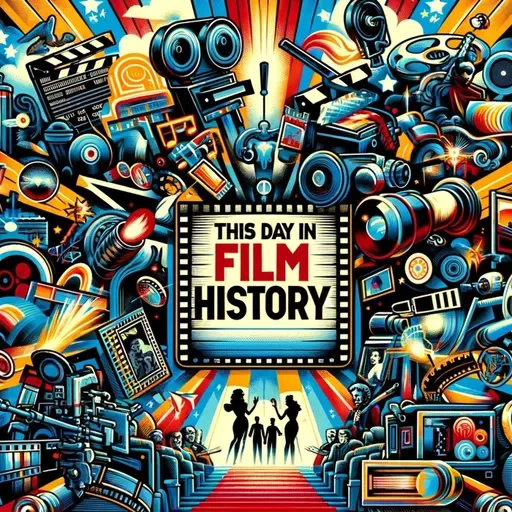
About
On October 4th, 1927, one of the most iconic films in cinema history premiered at the Warner Theatre in New York City: "The Jazz Singer," starring Al Jolson. This film marked a pivotal moment in the evolution of motion pictures, as it was the first feature-length movie to include synchronized dialogue and music, essentially launching the era of "talkies."
"The Jazz Singer" tells the story of Jakie Rabinowitz, a young Jewish man who defies his father's wishes for him to become a cantor and instead pursues his dream of being a jazz singer. The film explores themes of family, tradition, and the pursuit of one's passions.
While the majority of the film is silent, with title cards displaying dialogue, there are several groundbreaking scenes featuring synchronized sound. In one iconic moment, Al Jolson's character speaks the words, "Wait a minute, wait a minute. You ain't heard nothin' yet!" This line has become one of the most famous quotes in film history, symbolizing the dawn of a new era in cinema.
The film's use of synchronized sound was made possible by the Vitaphone system, which involved recording sound on large phonograph discs that were played in sync with the film. This technology, while groundbreaking at the time, was soon replaced by the more efficient method of recording sound directly onto the film strip.
"The Jazz Singer" was a massive commercial success and paved the way for the rapid adoption of sound in motion pictures. It also launched the career of Al Jolson, who became one of the most popular entertainers of the era.
However, the film is not without its controversies. The portrayal of African Americans in the movie, particularly in scenes featuring blackface, is considered highly offensive by modern standards. It is important to view the film within its historical context while also acknowledging its problematic elements.
Despite its flaws, "The Jazz Singer" remains a significant milestone in the history of cinema, marking the end of the silent film era and ushering in a new age of storytelling possibilities in motion pictures. Its impact on the film industry cannot be overstated, as it set the stage for the development of more sophisticated sound technologies and the creation of countless classic films in the decades that followed.
Some great Deals https://amzn.to/49SJ3Qs
For more check out http://www.quietplease.ai
This content was created in partnership and with the help of Artificial Intelligence AI
"The Jazz Singer" tells the story of Jakie Rabinowitz, a young Jewish man who defies his father's wishes for him to become a cantor and instead pursues his dream of being a jazz singer. The film explores themes of family, tradition, and the pursuit of one's passions.
While the majority of the film is silent, with title cards displaying dialogue, there are several groundbreaking scenes featuring synchronized sound. In one iconic moment, Al Jolson's character speaks the words, "Wait a minute, wait a minute. You ain't heard nothin' yet!" This line has become one of the most famous quotes in film history, symbolizing the dawn of a new era in cinema.
The film's use of synchronized sound was made possible by the Vitaphone system, which involved recording sound on large phonograph discs that were played in sync with the film. This technology, while groundbreaking at the time, was soon replaced by the more efficient method of recording sound directly onto the film strip.
"The Jazz Singer" was a massive commercial success and paved the way for the rapid adoption of sound in motion pictures. It also launched the career of Al Jolson, who became one of the most popular entertainers of the era.
However, the film is not without its controversies. The portrayal of African Americans in the movie, particularly in scenes featuring blackface, is considered highly offensive by modern standards. It is important to view the film within its historical context while also acknowledging its problematic elements.
Despite its flaws, "The Jazz Singer" remains a significant milestone in the history of cinema, marking the end of the silent film era and ushering in a new age of storytelling possibilities in motion pictures. Its impact on the film industry cannot be overstated, as it set the stage for the development of more sophisticated sound technologies and the creation of countless classic films in the decades that followed.
Some great Deals https://amzn.to/49SJ3Qs
For more check out http://www.quietplease.ai
This content was created in partnership and with the help of Artificial Intelligence AI